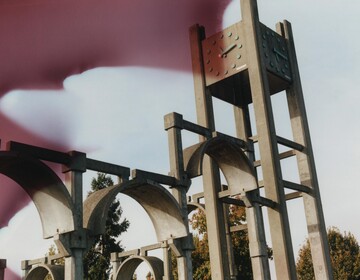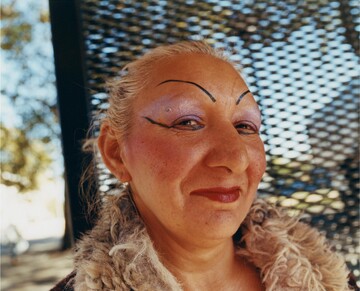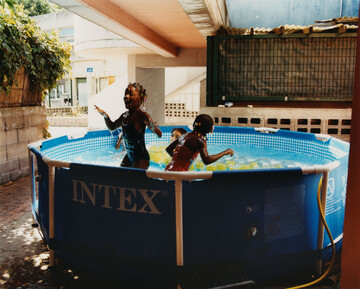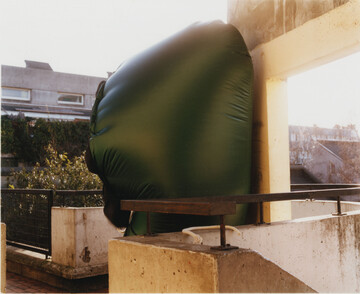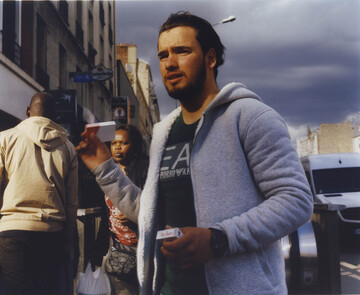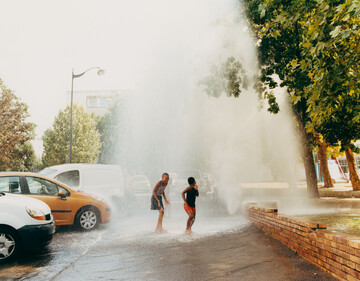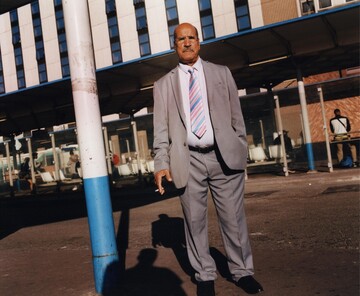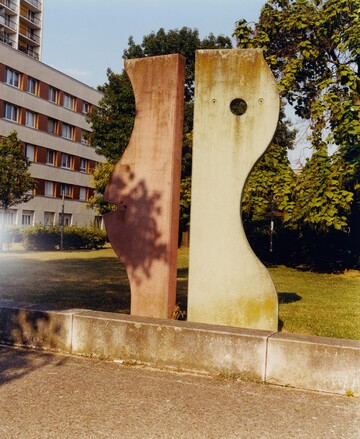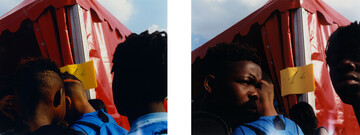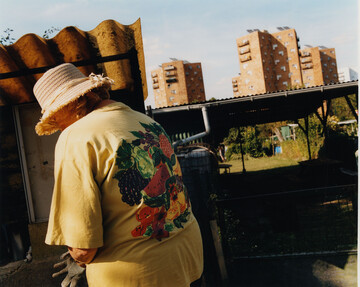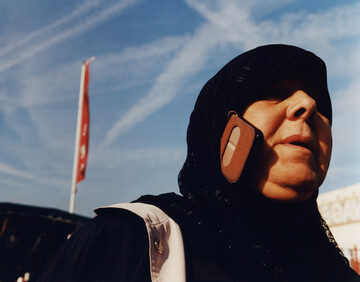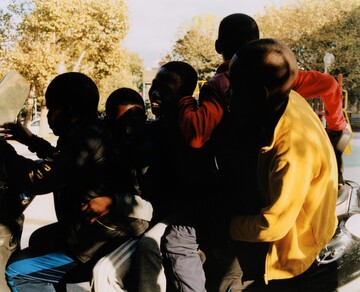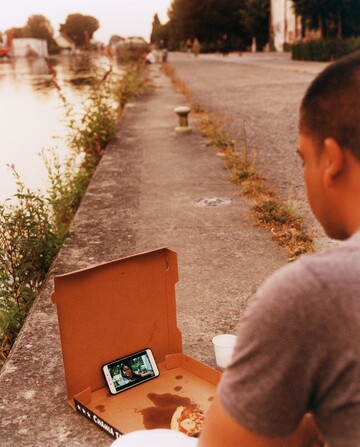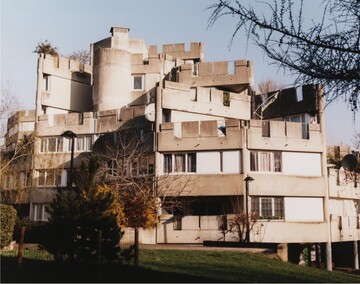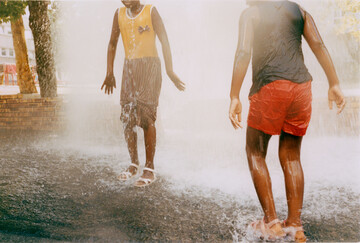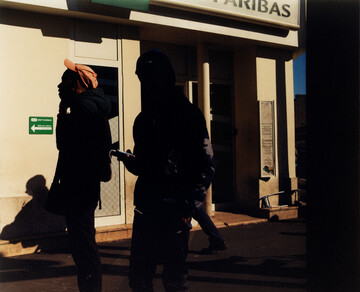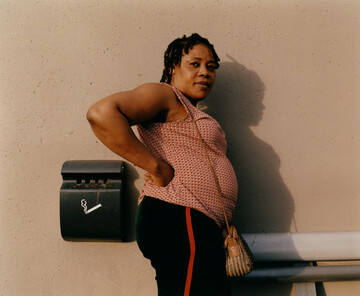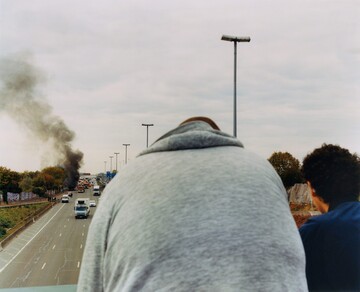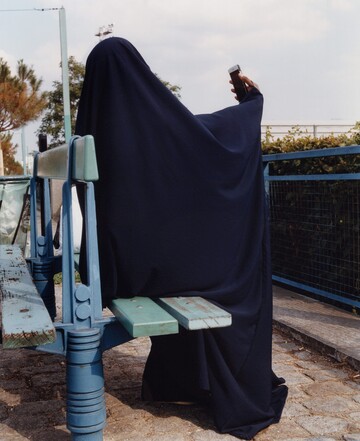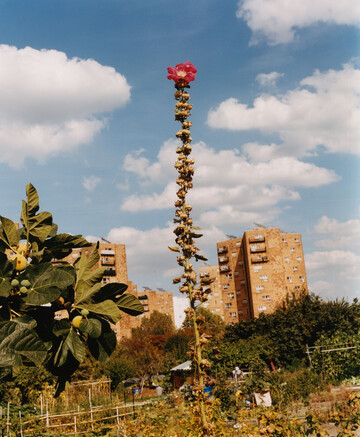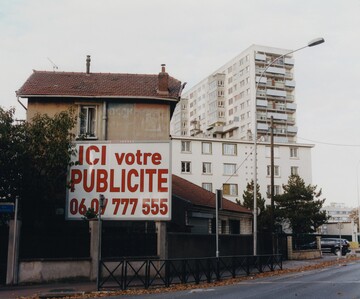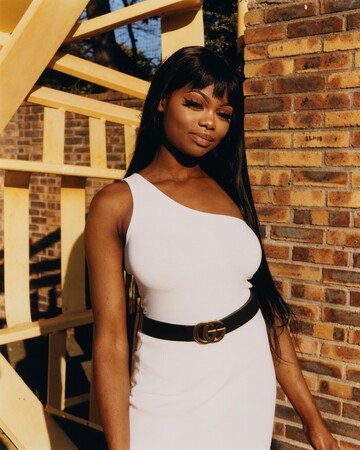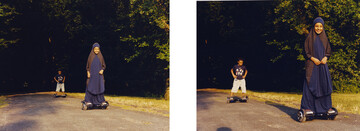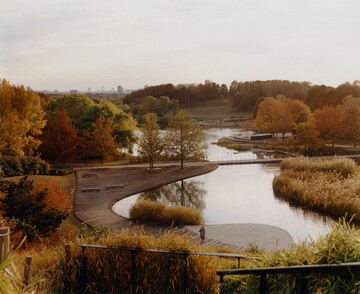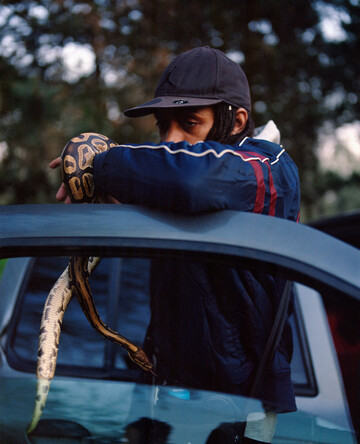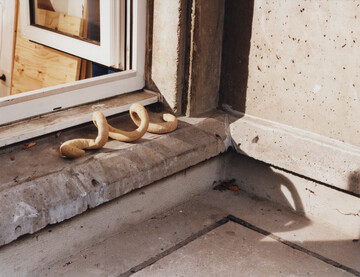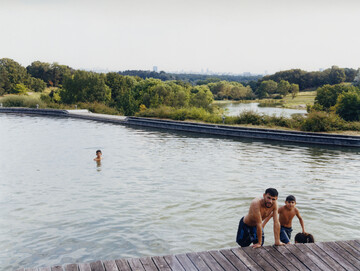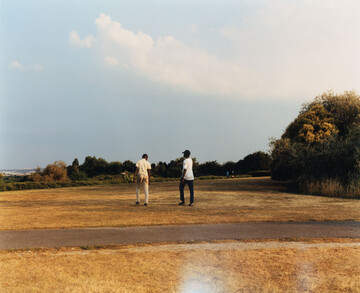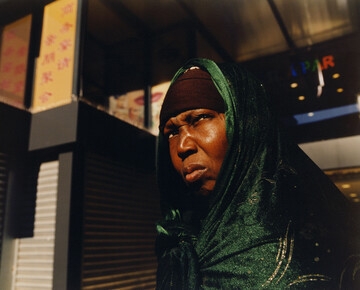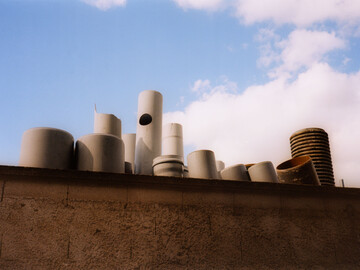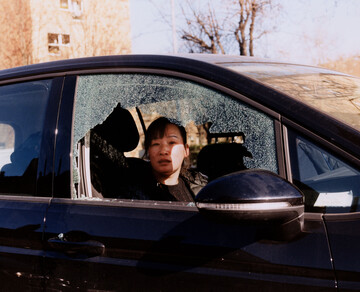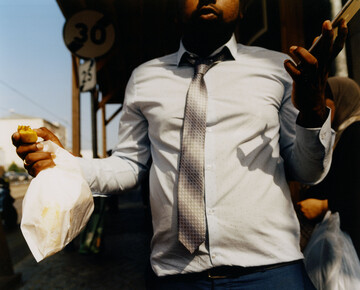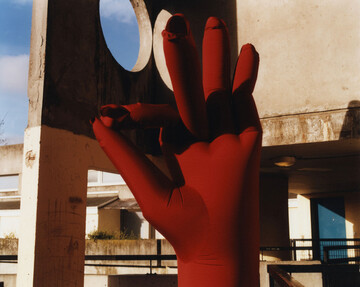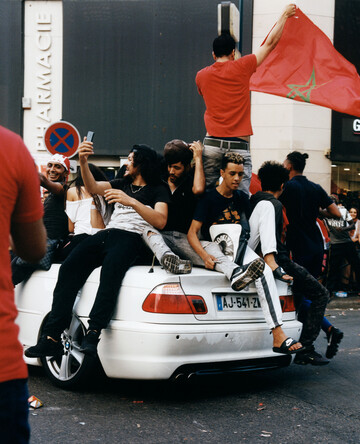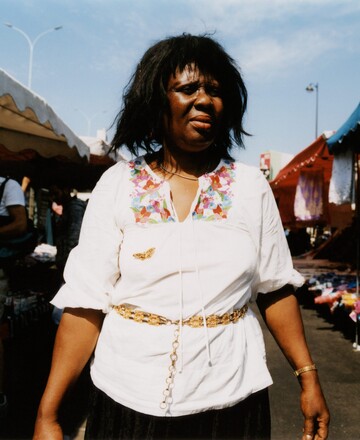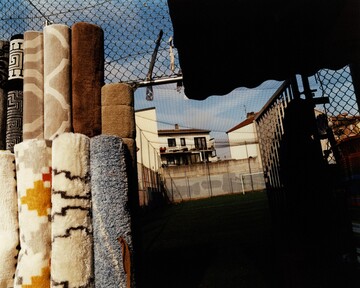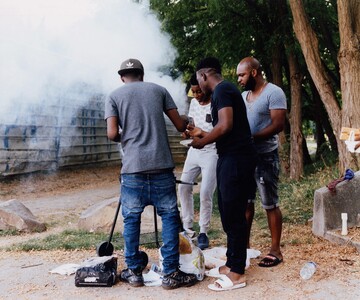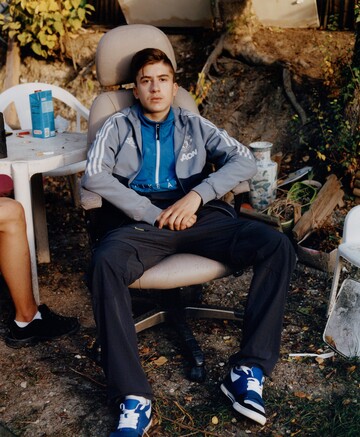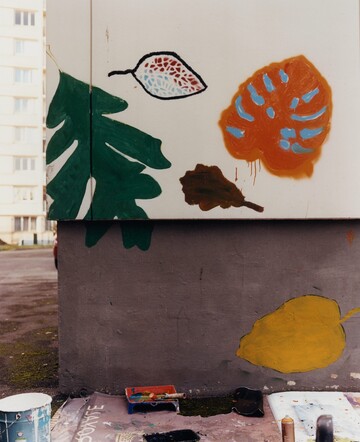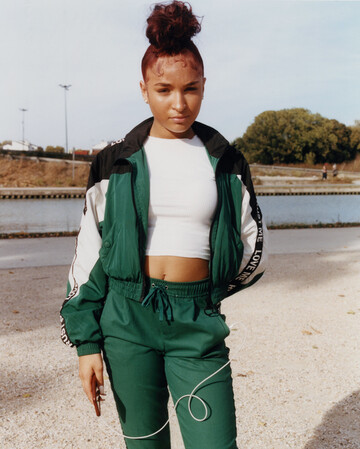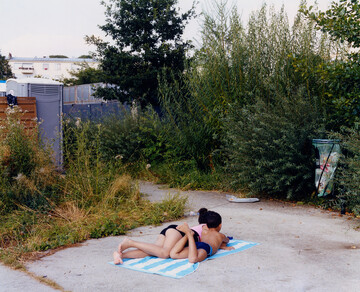Paris Nord (93)
, 2016-2020 00/00Paris Nord was shot between 2016 and 2020 in Aubervilliers and Seine-Saint-Denis, following Maciek Pozoga’s move to area in the same year. A busy and ethnically diverse suburb in the north of Paris, Aubervilliers was historically regarded as beyond the boundaries of the city. In recent years, it is increasingly populated by those who have been priced out of the centre. The area represents a fast-changing urban landscape as Paris continues to expand into its suburbs—a transformation accelerated by the approach of the 2024 Olympics.
La Maladrerie is one of a number of large-scale social housing estates that occupy the neighbourhood. Designed by architect Renee Gailloustet under the direction of a Communist mayor during the 1970s, it offers 800 local authority homes and 50 live-work spaces to be occupied by artists. The project had utopian ambitions to ensure social mixing across the lines of class and ethnicity, but many of the middle-class occupants departed during the late 1980s amidst rising crime rates. Pozoga now inhabits a rented unit in the estate, where he has established a darkroom and living space. The diversity of the area is an important focus of the photographs in Paris Nord, with Pozoga confronting his own place within it as part of a white, middle-class demographic.
He immerses himself in the clamour and chaos of his surroundings, focusing frequently on the facial expressions of his subjects, and the almost imperceptible emotions to be found in a brief frown or fleeting smile. These portraits range from the careful poses struck before the lens, with shoulders back and eyes to the camera, to the introspection of a subject who does not realise that they are being photographed. Pozoga walks the line between complicity and confrontation, raising questions about the ethics of street photography, in a method that he has compared to pickpocketing.
Teenagers crowd onto the bonnet of a car in camaraderie while one films the group on their phone; a man in a loosened tie bites into a fried snack, the grease turning the paper bag transparent; a woman in a velvet headscarf scowls into the distance, immersed in thought. The photographs in Paris Nord create personal impressions, or even imprints, of Seine-Saint-Denis through the people who Pozoga meets along the way.
The series developed intuitively from regular walks around the area, taken typically when Pozoga sought a form of release by leaving the house. Some of Pozoga’s most prolific periods of photographing for Paris Nord took place during times of low mood, as he sought to process these emotions through the act of confronting his surroundings. He used his vulnerability and his presence as a photographer to build a bridge towards neighbours and passers-by, even while remaining at a distance. Long afternoons spent with the contraband cigarette seller listening to local stories gave him a new perspective on the neighbourhood, and he was able to slowly become a fixture of the busy streets. Meanwhile, the loud clatter of the shutter on his medium format camera prevented even the most surreptitious of photographs from going undetected, leading to chance meetings and the swapping of phone numbers or Instagram handles.
There are powerful moments of joy to be found in these images, but they are inevitably melded with the daily challenges that many of the residents face. Seine-Saint-Denis remains one of the poorest banlieue in France, with more than a quarter living below the breadline. Kids grin ecstatically in one photograph as they try out their hoverboards, while in another a young teenage boy, with a prison bracelet visible on his ankle, sits aimlessly on a disused office chair in a community garden.
Pozoga uses the series to reflect positively upon the area’s strong sense of community, reacting consciously against the dramatised or condescending stereotypes that often characterise the photography of Paris’ ghettoised outskirts, from illicit drug deals to darkened concrete walkways. Instead, Pozoga’s imagery is filled with densely saturated colour, with some shots taking on an almost painterly quality in the graphic interplay of light and shadow. An early inspiration to the visual language of the series was Pozoga’s interest in Japanese manga, with a particular focus on the distinctive built environment the area, as well as the introduction of an element of the fantastical to the imagery. An enormous hand emerges from the pavement like an absurdist scarecrow, while a toy snake slithers out of a front door in another shot—surreal interventions to the landscape, occasionally staged by Pozoga, that blur the boundary between imagination and reality.
This is a distinctively French series, rooted in the country where Pozoga himself grew up as the son of a Polish father and French mother. Many of the protagonists of these photographs have strong connections to other cultures, inviting reflection upon the dual experience of being both a native and a stranger in your own land. Each image hints at stories that go far beyond the encounter captured within the boundaries of the frame—of journeys, hopes and distant memories. Paris Nord is at once a snapshot of a changing neighbourhood, and an intimate study of what it means to belong.
— Louise Benson
